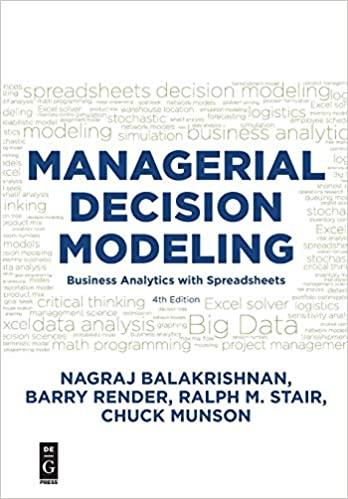Question
Instructions and background Your task is to make an estimate of McCormick & Company's Weighted Average Cost of Capital (WACC) to use as the discount
Instructions and background
Your task is to make an estimate of McCormick & Company's Weighted Average Cost of Capital (WACC) to use as the discount rate for evaluating capital projects, such as the one in the next tab.
The CFO plans to borrow a portion of the required $350 million initial investment for this project using 20 year bonds. For most of the past 10 years, the company has used 6.5% as the discount rate. This was based on a study of the company's WACC in early 2010.Interest rates have risen since the last study when the McCormick & Co rate average interest rate was 3%.We will use 4% today.Also, there has been a change in the weights between debt and equity in the overall capital structure since 2010.
The most significant change was the acquisition of RB Foods.It is the main reason for this study.Here is what our MD&A reported about that acquisition.
On August 17, 2017, we completed the acquisition of Reckitt Benckiser's Food Division ("RB Foods") from Reckitt Benckiser Group plc. The purchase price was approximately $4.2 billion, net of acquired cash. The acquisition was funded through our issuance of approximately 6.35 million shares of common stock non-voting (see note 13 of the financial statements) and through new borrowings comprised of senior unsecured notes andpre-payableterm loans (see note 6 of the financial statements). The acquired market-leading brands of RB Foods include French's, Frank's Red Hot and Cattlemen's, which are a natural strategic fit with our robust global branded flavor portfolio. We believe that these additions move us to a leading position in the attractive U.S. condiments category and provide significant international growth opportunities for our consumer and industrial segments.
The RB Foods acquisition resulted in acquisitions contributing more than one-third of our sales growth in 2017 and is expected to result in acquisitions contributing more than one-third of our sales growth in 2018.
As part of your work, you will be asked for a recommendation for the cost of equity.There are three widely accepted methods used to calculate the cost of equity.They are the Capital Asset Pricing Model (CAPM), the Discounted Cash Flow approach (DCF) and the debt rate plus a risk premium of 3% to 5% recommended by one board member.This last is often used by very wealthy investors as a check on the other two methods.Your recommendation for the cost of equity will be necessary so you can undertake the calculation estimating the WACC.
Questions:
1. You have been asked to calculate the cost of equity using the Capital Asset Pricing Model (CAPM).The CFO estimates the Beta as 0.90.Management wants to use the 30 year bond rate as the risk free rate, arguing that Investors should make long term investments; that rate is 3% today.The expected return on the stock market as a whole has been estimated to be 7%, 10% and 12% by various studies.The CFO asks that you use an expected return of 9% for the average stock.The market risk Premium (RPM) will be 6%.9% minus 3% = 6%.
Calculate the cost of equity (Rs) using the CAPM.The formula isRs = rRF + (RPM ) x .Rsis the required return on equity or the Cost of Equity, rRF is the risk free rate, RP M is the required stock market return in excess of the risk free rate, and , (Beta) is the stocks relative risk. is also described as the estimate of the amount of risk that an individual stock contributes to a well balance portfolio.
I need the following answer
Risk Free Rate ?
Market Preminum?
Beta?
Beta x Mkt Preiumum?
Risk Free Rate?
CAPM Cost of Equity
Step by Step Solution
There are 3 Steps involved in it
Step: 1

Get Instant Access to Expert-Tailored Solutions
See step-by-step solutions with expert insights and AI powered tools for academic success
Step: 2

Step: 3

Ace Your Homework with AI
Get the answers you need in no time with our AI-driven, step-by-step assistance
Get Started


